|
You might also be a fan of the late author Douglas Adams, who wrote Hitchhikers Guide to the Galaxy, Dirk Gently’s Holistic Detective Agency and the genius dictionary of made-up words, the Meaning of Liff. In 1992, he wrote a book called Last Chance to See, a travelogue about his journey to visit animals on the verge of extinction. Although the book has dated (some rare creatures have now completely vanished), I’m struck at how ahead of his time Douglas Adams was. Not only did he give us the meaning of life (the number 42, in case you forgot), but he foresaw the sad reality that a modern bucket list is not so much about doing something before you die, but before it disappears. I write these words in the midst of a second unprecedented heat wave in a normally mild British Columbia summer. The first claimed over 500 lives in just three days, a staggering number that’s largely slipped under the flood of the 24-Covid news cycle. Meanwhile hundreds of wildfires are burning in the interior, smoking our skies sepia, evacuating thousands of people and torching the entire town of Lytton, a popular destination for river rafting. Scientists estimate over a billion marine animals cooked in the first heatwave, and more are undoubtably boiling in their shells this weekend as the temperature and humidex approach the mid 40°Cs. Climate change has come home to roost, and techno-evangelism (technology will save us!) suddenly rings a little hollow for Pacific Island nations soon be underwater, communities going up in flames, loved ones burying their dead or biodiversity battered by urban encroachment, poaching and agriculture. I know you come here for good news, but since I’m a pragmatic optimist, we have to accept that the near and far future will suffer increasingly extreme weather events, causing unparalleled environmental, financial and cultural devastation. All I can hope is that this finds you in a safe and stable nation with enough progressive foresight and resources to prepare for this eventuality. All I can hope is that my bucket list books do not become works of history – much like Last Chance to See - a review of destinations that also no longer exist. Unfortunately, not much has been gained in thirty years since Douglas Adams sounded his convincing warning bell, and so much has been lost. My new ‘Bucket Listed’ column for Canadian Geographic Travel combines commentary with my travel recommendations. Each column is short and punchy and well worth reading, especially my second column about Indigenous tourism. My joyous and poignant Celebration of Canada column was sunk by the sombre nature of this year’s Canada Day, which coincided with horrific discoveries of residential school graves, sparking outrage at the nation and Catholic church’s complicity in an obvious attempt at cultural genocide. It’s a heavy topic for non-Indigenous Canadians to grasp, which is why I highly recommend reading Peace Pipe Dreams: The Truth about Lies about Indians which uses a lighter touch to help us understand the many challenges and injustices that Indigenous communities face today. Next, I explored risk tolerance with a column entitled: Is it Safe to Travel Again? before jumping into practical tips for planning bucket list road trips and revealing some of my favourite, less-known experiences in every province. Speaking of road-trips, I recently returned from a little adventure of Vancouver Island with the kids, ticking off some must-do experiences along the way. The new Malahat Skywalk was spectacular, with a few unexpected offerings (like a slide, boardwalk and adventure net) to elevate the experience well above just another roadside attraction. I’ve long heard about caving on Vancouver Island, so I’m a little shocked it took me so long to get to the Horne Lake Caves. I just assumed they were typical show-caves, but it’s more aligned with my best spelunking adventures abroad: hardhats, overalls, scrambling, twisting, ducking and climbing. Letting the kids hammer away for fossils under the guidance of an enthusiastic and experienced dinosaur museum curator was a stroke of genius, and we finished off at a fun camping festival in a forest near Courtenay. After 60 days of no rain, the heavens opened up and drowned us with the heaviest rainfall in years, soaking the thirsty fields and farms, and maintaining my 85% record of a mud-soaked fiesta whenever I camp at a festival. The Canadian government should just drop me off with a tent, a band and a DJ in the country’s most drought-impacted regions: statistical probability will take care of the rest. You can read about my Vancouver Island road-trip in my latest post on the newly relaunched www.canadianbucketlist.com Finally, I want to give a shout-out to the team at Great Canadian Trails, who are also passionate about remarkable Canadian outdoor adventures. You don’t need to be a hardcore backcountry explorer, cyclist, hiker, or paddler to experience the joys of a true bucket list adventure. GCT offer guided and self-guided tours that take care of all the logistics and make these kind of adventures far more achievable, accessible and enjoyable than you’d ever expect. We’ve been working together for years, they’re great people, and I’m thrilled they’ve managed to endure the challenges of Covid to emerge even more determined to help me build your lifetime highlight reel.
0 Comments
I’m delighted to be writing a new op-ed column for Canadian Geographic’s CanGeoTravel.ca. As a Fellow of the Royal Canadian Geographic Society, it’s inspiring to be in the company of those drawn to knowledge, adventure, nature, culture and history. My new bi-weekly column is called Bucket Listed, and I’m eager to explore whatever Canada’s post-pandemic future will look like. I’ll also tackle some hot topics and wild experiences, chat to some people you really should know about, and hopefully write the kind of words that might make a positive difference on all who read them. Like any practical optimist, I’m waiting to see how the highly anticipated tourism boom plays out. Dramatic change has both positive and negative consequences. After bringing an industry to its knees, Covid is undoubtedly an opportunity for tourism to return as something better. A few months before the pandemic, I stood on a stage in Wellington to warn tourism marketers in New Zealand about the problems of over-tourism. It feels almost quaint now, those reports of tourists overrunning attractions to the detriment of the environment, the industry, and experience of those tourists themselves. I like to think there’s a boardroom somewhere where global tourism power players sit around a table to plan and plot the new normal. I like to think they debate how the industry can return more responsibly, sustainably, and committed to the positive values of tourism as opposed to revenues above all else. I still shudder when I think about Bali, Angkor, Western Australia’s Monkey Mia and high-season traffic in Vancouver’s Stanley Park: pre-Covid, it was getting ugly out there. Now there’s a Catch-22: can we blame any tourist experience for doing whatever it takes to reclaim their lost dollars and keep their business alive? Oversell, underdeliver, cut costs, hang on - what do people expect after the past 18 months? Yet the industry has a rare and unexpected opportunity to reboot and avoid past mistakes: to deliver quality over quantity, focus on meaningful connections, include more voices and diversify, and protect the environments and communities in which they operate. No doubt some companies, agencies and marketing organizations will get it right, and some will get wrong. This is where you and I come in. This time, we can get it right. We can choose to spend our money on companies and experiences that are committed to the future of tourism the planet needs. If prices increase as a result, we can insist those costs are passed onto hardworking employees, community supports, and environmental protections. If this means we can’t afford to hop on a plane and fly overseas like we could, let’s re-focus our energies on the incredible local experiences that have sat under our noses all along. I know. All this is rich coming from someone who’s ticked off their bucket list in over 100 countries, or never spent a cent to offset carbon credits (primarily because travel writing is not one of those professions with too many cents to go around in the first place). I wrote about how I was complicit in over-tourism before, I just don’t want to have to write about it again. We have an opportunity to force the closure of exploitative attractions for good. We can stop treating old Europe as a strip-mall parking lot for massive cruise ships. We can keep crowd limits and pre-bookings in place. Unchecked growth was shaping a disaster. As growth finally returns to the battered tourism industry, let’s do what we can to check it.
Congratulations! Each decade of your life is an accomplishment. Goals are realized, professions evolve, priorities shift, families grow and experience is gained. This is also reflected in how we choose to travel, and where we choose to go. Celebrating these important milestones, I've gathered inspiring destinations to suit this passage of time. Of course, every journey is unique. You can turn these decades upside down, or mix them up entirely. A bucket list is as special and individual as the person who crafts it, and each life journey is one’s own. As for the passing of the years themselves, I defer to the wisdom of Mark Twain: “Age is an issue of mind over matter. If you don’t mind, it doesn’t matter!” Meeting Boris Becker as an 18 year old at Madame Taussad's in London. 20’s - LET'S PARTY In our twenties, we travel to relish in the excess. All night parties, camping on beaches, intense relationships – all with a no-holds-barred commitment to the carefree abandon of youth. It's a time to make the kind of mistakes you'll learn from, and sacrifices you'd only make when you're young. Legends of Full Moon parties and all-night desert parties sound particularly appealing, and you don't mind sleeping on floors or eating instant noodles for a month if it means you can get to them. Backpacking across Western Europe is a rite of passage, although it's also very expensive, Stretching your travel dollar, you'll be drawn to budget-travel meccas like Thailand, Central America, India and Laos. You might be drawn to a Kibbutz in Israel or volunteering with animals in Bolivia. Everything and everyone will be particularly vivid and intense, an opportunity to learn and grow and let your hair down. You'll only realize just how big that opportunity was when you're further along your life journey. Sharing a special sunset in Mauritius 30’s - ROMANCE AND FAMILY As we grow into our third decade, life might have rearranged itself so that we'd want to visit special places with a special partner who one day will grow a family with us. As we circle the possibility of a major life milestone, a romantic adventure is definitely in order. Bus around Thailand, from the white, sandy beaches in the south to the rich culture of the north. Brave the bungie jumps and wild adventures of New Zealand. Take a tour through Eastern Europe, exploring cobblestone alleys and medieval town squares. Perhaps towards the end of the decade or the start of the next, your partnership has grown. Parents of young kids know that happy kids will always make a happy vacation. Choose a sunny beach resort with lots of activities in Hawaii, Mexico, Barbados, or Jamaica. Introduce your kids to new cultures and cuisines. Slow down and bond with your nearest and dearest, as together you build the memorable traditions of meaningful family vacations. Here's an idea: let's hire an RV for an epic road trip in the Rockies! So we did! 40’s - IN MOTION At last, the kids are at summer camp, or old enough to join us on an adventure that's physical, but not too strenuous. As careers stabilize and hobbies strengthen, perhaps it’s time to hike the Inca Trail, trek in Nepal, or spend our well-earned holidays on a multi-day bike ride through the valleys of Italy or France. A fly-in fishing trip in Canada, a multi-day rafting excursion between the Grand Canyon, or maybe just an epic road trip to explore the Oregon coast, Route 66, Yellowstone or Banff National Parks. Consider a few weeks camping across Iceland, or taking a tour to pack in the highlights of Western Europe. Volunteering in a foreign country delivers a rich, rewarding experience. Teaching kids, building wells, looking after rescued animals – making a difference in the lives of others makes a difference for us too. Old enough to know better and yet young enough to go with the flow, the forties is a milestone decade to follow our feet, and safely veer off the beaten track. Smoked burnt ends and dinosaur bones. This is going to be so bad for me, and so, so very good. 50’s - FOOD AND FESTS Do you remember when 50 used to be old? Not anymore. Today it’s a time to celebrate our decades of hard work, and the settled income that it has brought us. Now we can appreciate the more expensive bottle of wine, the fine dining restaurant, the outstanding stage play. Forget nightclubs, it’s time to appreciate the spectacle shows and world-class performances on offer in Las Vegas. For something more exotic, we’ll turn to major cultural spectacles like Mardi Gras in New Orleans, or Rio’s famous Carnaval. Perhaps a major sporting event is in order, such as Wimbledon, an Olympics or the Superbowl. The very idea of exploring one of the world’s great wine routes – Napa in California, Mendoza in Argentina, Margaret River in Western Australia – is intoxicating. We’ve finally booked to see the world’s largest jazz and comedy festivals in Montreal, the best acts at the Edinburgh Arts Festival, or the latest hits on Broadway. Enjoy the festivals, performances, wine tastings and feasts. You’ve earned it! You can take my youth, but you can never take my freedom! 60’s - TIME FOR HISTORY As we usher in the next decade, the allure of history is more fascinating than ever. We begin to see our lives in a greater context, and appreciate the passing of time. Once we might have ticked off the Louvre in a couple hours before racing off to the next Parisian attraction. Now we take our time in the world’s great museums – the Louvre and Hermitage, the Guggenheim, the ROM and the Museum of Natural History. Waterways and rail transports us in comfort to treasures of antiquity: cruise down the Yangtze or Nile Rivers, or along the Mediterranean and Black Sea. Sit back in a viewing carriage to marvel at the Canadian Rockies, the Australian Outback, or the highlands of Scotland. We’ll take our time exploring the ancient temples of Cambodia’s Angkor, the biblical alleys of Jerusalem, the Mayan ruins of Mexico, or the narrow canals of Venice. There is so much to see, and still plenty of time. Making friends with young Masai warriors in Kenya, 70’s + - BUCKET LIST We’ve always wanted to go there. We’ve always wanted to do that. As we enter the seventh decade of life, we realize our bucket list destinations are not going anywhere, but we most certainly are. Fortunately, in an age of affordable airfare and such a diverse variety of packages, our dreams are more accessible than ever. Cruise among the islands and abundant wildlife of the Galapagos. On the plains of the Serengeti and the legendary Masai Mara, witness the migration of the wildebeest from the comforts of a luxury, or self-catered bush camp, and make friends with Masai tribesmen. It’s not always easy, but we’ll put up with a sweaty trek for a face-to-face encounter with endangered mountain gorillas in the jungles of Central Africa. Iconic landmarks like the Great Wall of China and the Coliseum, the Eiffel Tower and the Taj Mahal draw us like magnets. Perhaps it’s also time to finally tick off that Alaska or Caribbean cruise, or visit long-lost relatives in the nations of our ancestors. Let’s celebrate how far we’ve come, and appreciate the value of all that is to follow.
The folks who travel to every country and territory are a very special breed. They all have their individual motivations, but there’s an obsession that drives them to actually go everywhere, and I mean everywhere. It’s just not enough to join the Traveler’s Century Club, because if you made it that far, why not keep going? For starters, it requires a peculiar set of resources and skills. Financial, most certainly, but also hustle if you’re not insanely wealthy (which is very often the case). One needs an excellent grasp of logistics, and an acumen for resourcefulness, and most critically, to stay out of trouble. I’ve met several people who have ticked off all 195 UN-recognized countries, along with dozens of disputed territories that don’t quite make it (such as Transnistria, Abkhazia, Socotra, and other places you’ve likely never heard of). A good example is my friend Rus Margolin, and you can read my interviews with him here and here. This month, I was approached by a young Dane named Henrik Jeppesen who has spent 10 years achieving his impressive goal, which he’s recorded on a blog aptly titled everycountryintheworld.com. Henrik has been interviewing accomplished travellers and wanted to interview me. I agreed to answer his 8 questions of course, but not without asking him to answer 8 questions of my own. You can read my own answers to Henrik’s questions here. Robin: I find the richness of full-time travel can become overwhelming, like eating too much of a rich dessert. You see five jungles, you've seen them all. How did you keep it fresh? How did you prevent yourself becoming a jaded traveller? Henrik: That's a good question. I think I was not good at this. I, at times, felt like I've had the same kind of experience before. Sometimes it was a problem, sometimes not. The key was to keep doing something exciting. For example, one time, I did safari camps in Africa for several weeks in a row and it was getting tiring, but they still had many exciting moments. I think one of the best pieces of advice is to make sure to take breaks from travel. If you're doing full-time travel, you can do that by staying longer in one place. Nowadays, for myself, I prefer to go for quality rather than quantity. So instead of travelling full-time, I like to travel to places that make me excited and that I have researched properly. Robin: You're clearly an artist when it comes to travel, but also an artist when it comes to obtaining sponsorship, flights, and comped hotels. Much like myself, you started on a tiny budget, but you've leveraged your experience and reputation into 5 star hotels and luxury resorts. I know just how difficult it is to make that happen, especially with the flood of social media influencers. What's your advice for would be professional travellers, and how do you do it? Henrik: Be different. I started applying for sponsorships long before Instagram became popular. I think you would need one of two things. Have a special, unique project or a lot of followers. It's good to think about ideas for a project that's not been done before. Robin: I read on your blog that one of your happiest moments was getting married. Having a partner definitely changes things, just wait until you have a family (I have 2 young kids, we travelled to 6 countries for a year in 2018, and stayed in over 50 hotels). Is ambitious travel a young person's adventure, do you prefer travelling alone or with a partner? Henrik: It all depends on the company. I much prefer travelling with my wife. I have travelled with some people where I would have preferred to travel alone. If you travel with a friend for the first time, you don't really know if you are a good match for travelling together. So travelling with a new person for the first time is always going to be a risk. There's been good experiences and bad experiences for me travelling with friends, and people I didn't know well. Robin: There's a silly debate over what constitutes "visiting" a country. A night, a week, stepping foot on the ground? I spent an afternoon in Paraguay, did that count? What's your thoughts on it? Henrik: Yes, that absolutely counts as long as you have been inside a country; we can discuss whether a stop at an airport counts. Technically you have been in the country. I personally count a visit if you have cleared immigration. Robin: So you've been everywhere, well done! Can you tell people who dream of seeing the world what you found at the end of the rainbow? What happened when you reached your goal, when there's nowhere left on the list? Henrik: Thank you. It's a big accomplishment, but it's not like you win a gold medal at the end of it. It gives you credibility, the possibility to do public speaking, maybe some partnerships, perhaps some work opportunities. First and foremost, you do it for yourself, and it's great to know at least a bit about every country in the world based on first-hand experiences. Robin: The pandemic has devastated the tourism industry, and along with the challenges of climate change, it might be many years before we'll be able to travel the same way again. With the now-forgotten issue of overtourism, it's a valid question whether we should go back to the way things were in the first place. What are your thoughts on the future of travel? Henrik: I think travel will make a massive comeback. Many people want to travel, but we will perhaps travel in some different ways than before. Probably it will be a more hygienic experience to travel on public transportation, including airlines, I think. All airports might have hand sanitisers as a standard. I also think there will be a market for slow travel, where people would like to fly direct and spend a long time at a hotel, for example, a month. Robin: Country-counters are a special breed of traveller. The goal becomes an obsession. I felt the same way, until I hit 100 countries, and then it just sort of felt like I was missing the point, going on too many first dates without developing or deepening the romance. Someone is going to read this and want to follow in our footsteps, to see and do it all. What advice do you have for them? Henrik: Don't push yourself too hard. Stress is a terrible thing. If your time allows it, the best thing is to travel slowly and enjoy the places you visit. The challenge for many people who have visited every country I feel, especially the young people, is that they would like to accomplish something while young, meaning they cannot spend three months in each country. Many people don't really have the time to visit every country in a proper way. So, some of the least attractive countries from a tourist perspective, won't get much attention, at least in a lot of cases. Robin: Staying safe on the road comes down to common sense, instinct, relationships, and a little bit of luck. You write about having four mishaps, but it never stopped your journey. What mistake do you think people often make that leaves them vulnerable to crime, illness, scams etc on the road?
Henrik: Looking like tourists! Not only can travelling light save you a lot of money and discomfort, but it can also save you from a much bigger risk of being a victim of a crime. I don't like being out at night in a lot of places, so if you are like me in this regard it can also lower your risk of something bad happening. Another tip is to try and look confident, busy, and look like you know exactly where you need to go. Don't look lost. One of the wilder news items I've come across is a financial report: “Based on the expert analysis and our database of 480+ CA industries, IBISWorld presents a list of the Fastest Growing Industries in Canada by Revenue Growth (%) in 2021.” After Covid mugged Tourism, kicked us the ground, stole our wallets, and insulted our mothers, these analysts are predicting a remarkable return. Call it: The Revenge of Tourism: This time, it’s personal. The Top 5 Industries:
The theory goes like this: Following a similar pattern from previous pandemics - most notably the Spanish Flu a century ago - we’ll put Covid to bed, gingerly at first, and then with more confidence. After lockdowns and restrictions, after having no events or functions or festivals or parties, there’s going to be a social explosion. Consider ticker tape victory parades for the soul, as the entire planet blows off its collective steam. Some travel experts are already warning the hospitality industry to expect bad behaviour from their guests, because everyone is going to be reaching for that extra drink, saying: “you know, what the hell!” I mean, normally, we’d wait, or hesitate, or think about tomorrow, but after a year of no tomorrows, who cares? Heaving celebrations are expected, sexual norms will be relaxed, decadence and hedonism will reach new heights. Romance, adventure, pampering, relaxation, partying – threading it all together is Tourism, which explains the wild growth predicted above. As government financial support filters through the economy (most notably the $1.9 trillion relief package in the US,) we’re about to enter a bull market for the ages. The horrors of Trumpism have somehow been averted, the masses are wising up to the dangers and ultimate folly of social media. Trade wars have been put on the backburner, and even though China and Russia continue to flex their bulging muscles – and quagmires exist in Myanmar and other failed states – optimism deserves to abound. I personally believe we’ll look back on this decade as one of the most exciting, innovative and positive of the century. 2001 gave us a disaster, 2008 a meltdown, 2016 a disastrous meltdown. 2020 was the turning point, but the pandemic will be the accelerant for many positive social, technological, professional, and environment shifts that would not have occurred otherwise. It’s been a slog and yes, the suffering has been tremendous. While the long-term impact may be devastating for some, others will find the silver linings so thick they’ll be able to skate them. After wobbling thanks to explosive and largely unanticipated growth, the Great Reset has allowed global tourism to take stock, buckle up, and luck avoid the unsustainable mistakes of overtourism. The focus will shift to quality over quantity: more magic, less line-ups. All this travel will also make the world smaller, kinder and closer. As we all went through the pandemic together, we’ll emerge with something we’ve lacked for ages: a common purpose and global identity. We all went through it, what bigger ice-breaker do you need? You can’t do what I do and not be an optimist. And yet, there’s one tiny fact most exuberant forecasters are omitting. The bigger the roar, the harder the fall. The pattern of pandemics is a blazing era of growth, followed by an inevitable market crash. A century ago, the roaring twenties led to the Great Depression, which left a scar on all the decades that followed. It makes me recall the Pharoah’s dream in the Bible’s story of Joseph. Expect seven fertile years, followed by seven years of hardship. We’re at the cusp of an extraordinary period of success, but it will end, and it will end hard. But let’s worry about that in a couple years. For now: get the vaccine, wait for the gates to open, and let’s prove the analysts of IbisWorld right.
It was December 25th, and we were exploring a beachside village on the island of Zanzibar. The weather was perfect, the sandy beach endless, the sunset epic, and I remember my girlfriend at the time being utterly miserable. It was Christmas Day in paradise, but she was homesick. Literally: feeling ill in her longing for the comfort of her home and family. Homesickness doesn’t impact every traveller, but those that suffer from it can do so acutely. It accentuates the strangeness and uneasiness of being in a foreign place, causing mild distress to full-blown depression. There have been few academic studies about the topic, mostly addressing the situation of college students leaving home, or with the aim to help immigrants or expats adjust and settle. In the world of tourism, the fail-safe remedy is shoulder-shrug obvious: if you get homesick easily, don’t leave home. Still, homesickness can ambush even veteran travellers from one day to the next, onset by family events and occasions, guilt, and even weather. Away from the sunshine of the nest, it’s easy to idealize family gatherings, the embrace of a parent, or the warm taste of home-cooking. Life-long travellers with ants in their underpants (myself included) certainly miss home, but tend to view its absence as the cost of adventure. Like any endeavour into the unknown, sometimes it’s worth it, sometimes it’s not. Like so many other cultural phenomena, the Covid-19 pandemic has turned the concept of homesickness inside out. Confined to our homes and immediate localities, it’s understandable that many of us are now getting sick of staying home. We’ve binge watched Netflix and read books, completed the long-delayed home renovation, transformed cluttered dens into exercise, yoga, meditation or reading nooks. We’ve acquired pets, puzzles, games, and creative projects. We’ve explored nearby urban parks, camped in the woods, ordered in, baked bread, picked up an instrument, banged pots, and gone a little overboard with holiday lights and Halloween decorations. We’ve painted and potted, minimized and maximized, shopped for deals and donated old furniture. We’ve made craft pickles, played cards, slam-dunked a three-pointer in wastebasket basketball, and let loose in our living room discos. There’s been board games, bored games, and borrowed games. Zoom drinks and Zoom birthdays, Zoom conferences and Zoom concerts. Our homes have transformed, having to accommodate an increasingly restless desire to get out and do something already. These past twelve months may have been heaven for homebodies, but once the novelty wore off, the compass is pointing further south for the rest of us. Homesick has a new definition: we’re no longer feeling sick for the longing of home, but rather, we’re sick of spending too much time at home. As winter settles into its longest stretch, my desire for a change of scenery is becoming acute, and my memories of travels – from the Amazon to Zanzibar – fade and fog. It’s just one of the reasons why I believe the 20’s are going to roar louder than many a decade that has come before. We will soon take our first tentative steps into the post-pandemic world, and once we feel the ground as solid as we remember it, expect confetti to explode. Few will pine to go Home for a Rest, rather: we’ll flee with unabashed glee, chasing the Spirit of the West, East, North and South. And while we’ll always long for the comfort and familiarity of our homes, reversing the meaning of the word “homesick” may ultimately end up being the best treatment for those who still suffer from it.
Travel’s appeal is broad and encompasses varied experiences -adventure, food, history, romance – but I’ve always felt it keenest with the sense of discovery, of being absorbed in unfamiliarity. It’s personally invigorating to have to decipher a new set of rules, laws and cultural norms. Locals around us seem perfectly at ease, but we can’t shake the feeling that we are other, visitors, not from around these parts. Travelling alone further isolates us outside our comfort zones, as there’s nobody to share our experience with, no one to point out the wonders and absurdities. Disorientation can be challenging and difficult, which is why it’s not for everybody. I recall quite vividly my first few steps within it, in London 1997. I’d moved to the city on a two-year work permit with lofty ambitions to excel in online media. Tubing around, just another faceless face in a sea of commuters, I’d never felt so empowered and helpless at the same time. Several years prior, I had bought a small Robin the Boy Wonder figurine at a flea market in Grahamstown, South Africa (now Makhanda). Bashed, scarred and a little bashed and bruised, it quickly became a lucky charm and has joined me in the over one hundred countries I’ve visited since. Alone in London, I popped into a pub near Angel to steel myself with a flat pint and escape the sensation of being overwhelmed. In my daypack was a little black notebook with addresses of companies to drop off my resume, and the Boy Wonder of course, anything to increase my odds. For reassurance, I grasped my figurine and noticed that Boy Wonder was pointing to his eye, as if to say: “open your eyes, look around, observe.” And so I did: noting the sticky carpet beneath my feet, pot lights reflecting off brass beer taps, the clientele of day-drinkers and office skirters. I penned these observations in my notebook, which I still have somewhere, and a travel writer was born. I now have dozens of these same little black notebooks (bought from the CNA newsagent in South Africa, others just don't cut the mustard) filled with scribblings and interviews, observations and thoughts. Viewers around the world have seen me writing in these same books in almost every episode of my TV show (Word Travels is now available on Prime Video in Canada). This week, I finally went travelling again, but I had forgotten my black notebook, its virgin pages eager to capture thoughts as I wandered about aimlessly. I was opening my eyes in a new world that felt alien and awkward yet fascinating and alluring at the same time. Most bizarre of all, this strange new destination was downtown Vancouver, the city where I live. It’s been well over a year since I strolled the blocks of Granville, Davie, Hornby and Howe. This used to be my hood. In a former life I could tell you the names of most of the stores, and a funny anecdote to go along with them (I think I snogged someone in the alley behind The Moose / that’s the joint where I ate late-night soft-shell crab with a rock band, etc). These days I live and work 25 minutes’ drive away in a forested suburb, and even if Covid hadn’t come along, there’d be little reason to visit the music venues, offices, restaurants and coffee shops that line these particular blocks. Since leaving my apartment downtown, I’ve been harbouring an image of downtown Vancouver’s urban liveliness: it’s vibrant streets jiving with crowds and colour. Today, I found an inner city ravaged by the pandemic. Almost every third store was boarded up, tagged with graffiti or heartbreaking farewells from its broken proprietors. Homeless were sleeping in shoddy entranceways (wasn’t that an upmarket restaurant? wasn’t that a boutique?) some were shooting up as I walked by. Coffee shops were open but empty, except for the Starbucks on Howe which was boarded up and gone for good (a Starbucks closing, in Vancouver?) There was an unusual abundance of street parking, and the few people walking around – some masked, some not - carried a heaviness about them, a sense of sorrow and guilt. Among this decay towered proud new condos that didn’t exist a year ago. Unlike Toronto or Montreal, construction has never ceased in development-mad Vancouver. The hip art gallery and cheap-eat restaurants on the corner of Robson and Seymour have been bulldozed, awaiting another glass tower jammed with million-dollar 600 square-foot studios. Opposite the city library - looking even more ancient than its bold Coliseum-influenced design - new buildings are transforming the city’s skyline, including a massive development in the former post office to ironically house a new headquarters for Amazon. The streets were familiar, but everything else? I may as well be walking Doha or Dallas or Derby or any other modern city I’ve yet to visit. Tragic as it was discovering the cracking shell of my own city, I was nonetheless jolted by the nostalgia of discovering some place new, alone and lost, with only my thoughts for company. I may not be going anywhere for some time yet, but even if Boy Wonder is gathering dust on top of my bookcase, it continues to remind me, and all of us, to keep our eyes open as we observe the changing world around us.
Personal reflections on a turbulent, difficult and yet oddly reassuring year. 2020 was certainly memorable and entirely original within the context of modern history: let's hope it stays that way. I’d often look out the plane window and wonder: how on Earth is this heavy piece of machinery flying? How does that wheel mechanism work, who figured that out? Modern air travel is a screaming, airborne testament to the power of human ingenuity, the practical benefit of science, and the accomplishments of very smart, innovative and daring people. Don’t get me started on satellites and wifi and digital cameras and glass buildings and full supermarkets packed with fresh produce grown on the other side of the planet. And all this gave me faith that, despite the political, environmental and cultural hiccups caused by lapses in our evolving hunter-gatherer brains, we got this. We’re gonna figure out climate change when we have to (because everyone knows the world is run by self-interested politicians who only do things when they have to). We’re gonna figure out racism and sexism and Anti-Semitism and how to get from A to B without gridlock traffic or a 23-car pile-up along the way. Smart people have got our back, because every time you hear something like “we need to change” and “it’s not too late if we act now” it’s not referring to you. Your impact in the we is almost comically limited. Rather, we refers to the 1% of the 1% who actually pull the levers of commerce and power, the we who can make a decision on a golf course that changes the course of history, the we who fund science labs or close coal mines or lobby legislators. I’ve never been to Davos, a TED main event or a shadowy Bilderberg conference, but I imagine it must be exciting to experience a gathering of such we that collectively drive the progress or decline of our human experiment. The we who founded, built and inherited airlines and space programs, digital research, architectural titans and global supply chains. The we who ensure that global pandemics remain spook stories in the media, not an actual reality. Hell, Bill Gates, among the smartest, most generous and accomplished of the we, warned about pandemics years ago! We got this. Growth, progress, order, technology, entertainment, design…we got it all. It’s not just a Boeing, it’s a Boeing Max! Those tragic plane crashes were a warning shot we couldn’t hear in 2019. When 2020 rolled around, the wheels fell off the goddamn plane. Headline news today, December 8: a 95-year-old lady in the UK has received the first vaccination for Covid-19 outside of a clinical trial. Biomedical researchers have outdone themselves in the race to get our planet back on track, aided by unprecedented support from desperate health authorities weary of telling wearier populations to wear masks and do their part. Full credit to them, and all healthcare workers. It is a testament to what they – not we, unless you volunteered for an experimental vaccine jab - can accomplish when all the chips are on the table. Still, nine months of panic, uncertainty, misinformation, conspiracy, pot-banging, fear-mongering, vitriol, rolling numbers and opaque charts has taken its toll. Like so many others impacted professionally and personally by the pandemic, it’s a duty to ask: How could this happen? Why did this happen? Who was responsible for it, and who was responsible for ensuring it was under control? Then you look at our leaders: an idiot US President who doesn’t read books or care about anyone other than himself; Brexiters who somehow felt that isolation is the best step forward in a globally networked economy; a blundering Canadian PM learning on the job which he has only maintained due to a lack of dynamic competition; hard-line thinly veiled “democratic” dictators in China, Russia, Turkey, India and Brazil. Bezos, the world’s richest man, is hell-bent on putting everyone out of business unless they benefit his business, and Musk, now the second richest man, is hell-bent on pursuing some sort of techno outer-space utopia so that wealth and privilege have an escape route when the planet burns. How did we end up with this sorry lot, and how the hell can we expect this “we” to get us out of this mess? Thank god for the women in charge: New Zealand, Scandinavia, Germany – and soon but not soon enough, the US and Canada. Women who can tackle big issues with a lot more empathy and a whole lot less swinging dick. I look back on 2020 as the year when my faith in the popular assumption that “smart people have got a handle on it” was shattered. A year when best laid plans crumbled, adventures were cancelled, tension rocketed, questions (not to mention emails) went unanswered, loved ones passed, and the stable ground shook. A year that never delivered. And yet, employing our incredible human talent to rationalize just about anything, I believe 2020 can be looked upon as being entirely necessary. Everyone needed to step to the edge, to peer over the ledge, and slowly back away with a newfound appreciation for what we have, how we have it, and why we cannot take it all for granted. 2020 demonstrated what is possible when the world of science, economics and politics mobilizes and the public makes sacrifices for the greater good. It wasn’t pretty. While I don’t condone or agree with the anti-maskers and hoax fruitcakes, I can certainly understand their frustration. The we with power sold the us without it a promise: work hard, do your job, don’t ask too many questions (especially about finance and politics) just keep cheering for your sports team and buying our crap. In return, we promise that your property value will increase, your kids will have jobs, the planes will take off. Everything will be fine. Well, obviously, it’s not. Deep breaths then, have a drink, swallow some soma (the soothing, happiness-producing drug featured in Aldous Huxley’s increasingly prescient Brave New World). Perhaps they got us into this mess, but we are all in it. With a little luck and elbow grease, I’m optimistic they will get us out of it, and once all is said and done, we’ve had a critical dry run for the next widespread global catastrophe. The impact of climate change on cities, geo-politics and trade is going to make Covid-19 feel like an aperitif at a twelve-course meal. Even as 2020 shattered all illusions of our infallibility, it also removed the shackles that “it can’t be done.” Scientists developed several safe and innovative vaccines in mere months. Politicians shut down entire economies. Media changed popular culture. All this shifted the course of history – all to battle a tiny virus that threatened a tinier minority of the global population. After this, we can do anything. Personally, 2020 was the year I spent with my young children – day in, day out. Hard, long days, and yet days I know I'll look back on fondly. Supported by government benefits (this was not the year to be in the business of tourism, events and travel media) it was an anxious, stressful time that nonetheless highlighted how much I have to be grateful for. Living in a world-renowned city in a stable, prosperous country, for starters. Having a safe, healthy, and loving family. Patient and supportive friends and neighbours who regularly withstood my rants. Time to write and reflect and put together a 700-page printed journal in an attempt to apprehend old memories and the passing of time. This year, my daughter won a lottery to attend a public arts school, my Dad kicked cancer, my wife’s career blossomed. Not one, but two friends bought hot tubs (like boats, you don’t want to actually own a hot tub, you want someone you know to own one). I even managed a romantic little adventure in a brief window between lockdowns. Summer was long and hot and dry. I took my kids camping to Vancouver Island and along the Fraser Canyon, on regular bikes rides, berry picking, kite flying on beaches, on trips to explore the best playgrounds in the Lower Mainland. Summer also brought weekly family picnics in the park, where we toasted our good fortune to live in a city that successfully flattened the curve (a term that feels almost archaic now, along with social bubbles and the 7pm evening pot-banging in support of essential workers). I shouldn’t forget that in January I also broke two bones in my shoulder learning to ski, another painful reminder that I’m not quite the invincible buck I once was. The year was bookended by Netflix sensations that spoke to the times, commencing with Tiger King, a bonkers tale of excess personalities, and ending with Queen’s Gambit, a gorgeous drama about a chess prodigy’s battle for control of her life. We could all relate. Usually, I trawl end-of-year lists in search of the best music, books, films, photography, articles, etc. My heart isn’t in it this year. Even as I type, Spotify is streaming a Best Indie of 2020 playlist, but all I hear is generic-sounding beats of broken dreams. Tough times to be a travel writer, worse to be touring musician. And this is the theme, I think, of 2020. It was a bad year – no doubt about it – but wow, it could have been so much worse. Yet, there’s light at the end of the tunnel, vaccines will soon be here, and I expect there will be a global exhale. We’ll flock to the streets, unleash pent-up positive energy, embrace a new era, and look to new progressive leaders who actually believe in science. Don’t expect miracles: I suspect the United States will continue its inevitable disintegration into a handful of like-minded nation states. China’s Belt and Road initiative will continue to re-wire global trade for its own interests; economic inequality will continue its relentless march to barricade the haves from the have-nots; and the mass extinction event accompanying accelerated climate change – the real endangered elephant in the room – that’s coming up faster than an out-of-control Australian bushfire. Threats are real, and threats are here. Humanity can face the challenges, only because we now know what is possible. Take a page from the Mandalorian and believe it: This is the way. I wonder how my children will look back on 2020. My four-year-old won’t remember much, but the seven-year-old will, certainly a lot more than I can recall about 1980 when I was her age. She’ll read books and watch movies and say: “I was a kid during the Covid-19 pandemic. I remember we couldn’t have playdates or go to museums or have birthday parties. And I remember how happy everyone was when it ended.”
I hope that’s all she remembers. As for me, I’m not sure I’ll ever be able to look out the plane window with the same impressed sense of awe, assuming that whoever is in charge of the wheels has everything under control. As the saying goes: assume anything, and it makes an ass out of u and me. Just as prestige television has reinvented the high concept of broadcast drama, documentaries that investigate global issues have become vital components of civic society. Supported by the deep pockets of Netflix, Amazon, HBO and the like, it gives me hope that we’ve transcended the overly-commercial, ratings-dependant, and largely vacuous focus of traditional broadcasters, who seldom gave docs light of day. Important films and series are now being made that would never have been made before, and are seen by more people than would ever have seen them before. Their impact on our world is real. On Netflix, The Great Hack and The Social Dilemma have exposed the shocking consequences and murky mechanics of social media. Icarus unmasked Russian sport doping, 13th clearly explained systemic racism, while Capital in the 21st Century has revealed the scale of our financial folly. Produced by elite sports stars, Game Changers rewrote the book on veganism, while Last Dance and F1 Drive to Survive gave us wild access to wilder sports. Becoming and Knock Down the House hold up political heroes too. And then there’s David Attenborough. Now in his 90’s, the legendary natural history filmmaker has grasped the potential of streaming to reach mass audiences, hosting ground-breaking series that air on Netflix as well as traditional broadcasters like the BBC. Night on Earth, Planet Earth II and Our Planet have truly pushed the boundaries (and no doubt the budgets) of what the genre can achieve, giving us jaw dropping never-before-seen glimpses into the natural world. Attenborough’s wise voice adds indisputable credibility and trust. For me, he’s always been the ultimate school teacher, an inspiring voice and authority worthy of respect. The teacher you listen to, and never forget. Other than perhaps Morgan Freeman, I can’t imagine another voice narrating spectacular natural visuals with such wonder, gravitas, reverence and enthusiasm. Which is why his latest film, David Attenborough: A Life on our Planet, moved me to tears. The final card reads: “This film is David Attenborough’s Witness Statement. Who else needs to see it?” Everyone needs to see it. Absolutely everyone, and their families, friends and cousins too. I read a review for the One World series that questioned why the show didn’t focus more on the imminent and deep threats to the natural world, why Attenborough is celebrating ever-diminishing diversity instead of hitting the panic switch. There’s no crime in focusing on the positive, and while all his series do address critical threats to our planet’s eco-systems, panic switches have never been Attenborough’s forte. Also, he likely knew well in advance what was coming, and exactly what his panic switch would look like. A Life on Earth begins in spooky, desolate Pripyat, the abandoned Ukrainian city that once supported Chernobyl. I spent a couple days there, I’ve been in the same hallways, cracked apartment blocks and eerie streets. The world’s worst nuclear disaster has made this model Soviet city uninhabitable for thousands of years, an avoidable mistake blamed on human error. Likewise, we are doing the same for our planet, but our destructive global meltdown is taking place slowly in real time. When Mr. Attenborough (he deserves the prefix, as do all great teachers) tells us he has witnessed the devastation taking place over his own lifetime and with his own eyes, it warrants no discussion. For 118 minutes, everyone – boomers, millennials, scientists, corporations, politicians - needs to shut the fuck up and listen to what this extraordinary elder has to say, and respectfully bear witness to his statement. Accompanied by incredible images pooled from his many shows, he explains what is going on in clear, concise language so that a child might understand it. How the oceans and jungles and forests are dying, how we’re entering the planet’s sixth great extinction event, and how every step forward is through a series of one-way doors with no turning back. Once nature’s system is out of equilibrium, it all goes to hell. As a graphic shows the passing of his years, the loss of natural habitat, and the increase of CO2 in the atmosphere, Mr. Attenborough becomes visibly more frustrated and upset. How fortunate we are to have shown up during the Holocene, a 100,000-year Eden of unprecedented natural stability. But like bad hotel guests, we’ve completely trashed the place. At this rate, Earth won’t be nearly as bountiful or habitable for future generations. The most harrowing part of the film is a projection of what the world will look like in 2030, 2050, 2080. Wildfires, dustbowls, ocean deserts, collapsing food stocks, melted ice, displaced millions…Attenborough looks away in horror, and we feel the blackness of his despair. We had so much, and we wasted it. How will the future ever forgive us? But this is David Attenborough, a man who has seen more wonder and amazement than anyone could ever hope to see. All is not lost, and there is hope. “I’m going to tell you how,” he says. Once again, I sit up and pay attention, because as the film cuts to clips of Attenborough lecturing in Davos and for the UN, I know he’s not going into platitudes about recycling saving the Earth. Using real-world success stories in Costa Rica, Palau, and yes, even Chernobyl, Mr. A discusses the imminent approach of our peak population, with ambitious plans to protect our oceans, re-wild the scorched forests and plains, and increase vital bio-diversity. Because, he insists, that’s what it all comes down to: if we sustainably restore the system, our planet will breathe again, and it will be a win-win for our food security, stability, and human prosperity. Often, the “we all need to change to save ourselves” diatribe can feel overly simplistic and dismissive of economic and political realities, but from the mouth of Sir David Attenborough, it left me with renewed hope and purpose. With any luck, it had an impact on his audience at Davos and UN, for those with political and economic power are the “We” that need to change most of all. Other essential documentaries:
In a while, crocodile. Cango Wildlife Park, South Africa I have entered a cage four times to stare into the eyeballs of four famously dangerous creatures that one is strongly advised – and I cannot emphasize this enough - not to stare into the eyeballs of. Psychologists could unpack a fascinating study behind the motivations of people who choose, willingly and with good money, to get close to animals like sharks, crocodiles and lions. Not that such a study has ever been commissioned, since scientists of all ilk are currently laundering lab coats for more pressing concerns. Since we live in an age of misinformation, I may as well just invent one. According to global peer reviewed research study (*that was neither peer-reviewed, researched nor studied), thousands of people choose to cage-dive with dangerous animals because:
Curiously, 63% of these non-existent participants said they harboured a deep and unexplainable fear of the above-mentioned animals, and 12% said they only signed up having felt guilty for entering the booking office with the sole intention of using the toilet. Whatever floats your boat, and that's where we'll begin, bobbing off the east coast of South Africa on the lookout for man-eating Great White Sharks. Since they are widely known for bearing progressive and egalitarian natures, the Great Whites eat women too. Nice fishy: Mossel Bay, South Africa When I entered the cage, I was still between the teeth of the shark phobia that had plagued me since watching Jaws on a hotel movie channel as a 6-year-old on his first beach holiday. Fast forward a few decades, and I’d seen far better movies which highlighted the vital role sharks play in the eco-system, the horrific carnage behind their hunting for shark-fin soup, and their overall misunderstanding within popular culture. Fact is (and this is a real fact): Sharks are amazing. If they wanted to eat people, hundreds of us would be attacked every day, all around the world. In reality, you have more chance of struck by lightning or drowning in a bathtub (this is also true). I jumped into the cage, and had a life-changing experience with a rather large great white who could have attacked me from beneath (where the thick cage inexplicably and unnervingly morphed into a wire-hangar-thin mesh). From that moment, I resolved to learn how to scuba dive, and have since shared an underwater, cage-free space with sharks from Hawaii to the Papua New Guinea. That first cage dive truly changed my life for the better. If you insist and persist on eating shark-fin soup, please look at yourself in the mirror, then jump out a high window. Millions of sharks needlessly massacred each year will thank you. Swimming with Salties: Crocosaurus Cove, Australia. Crocodiles are an entirely different beast. For starters, they simply want to eat you. No curiosity here, no meeting of creatures or confusion because you look like a seal. To a crocodile, we look like lunch, which is why they quickly surrounded me in the pool. At Cango Wildlife Ranch in South Africa, I entered a steel cage and was lowered into a pool. At Crocosaurus Cove in Darwin, northern Australia, I was inside a cylindrical Perspex tube with a few too many croc teeth scrapes for comfort. The Nile and Saltwater dinosaurs that decided I looked too delicious to pass up bumped me around a bit, their large orange reptilian eyes gazing deep into my soul. 17% of our fictional survey participants mentioned they enjoyed the sensation of feeling like prey. I, for one, did not. While my shark cage encounter made me want to dive with (admittedly less fierce) sharks in the wild, the croc cages left me twitchy about the Crocodile Warning signs I later encountered at popular swimming holes outside of Darwin and in tropical north Queensland. The mere thought of saltwater crocs patrolling the coast keeps locals off the beaches, and one taxi driver told me about a pet dog that ran to the beach, jumped into the water, and was promptly gobbled up by a lurking croc. According to a BBC Report, the best tip for surviving a crocodile attack is to avoid getting attacked. That's one helpful report, I don't know what we'd do without it. Somewhere in Bohol, Philippines. The Burmese python acting as a living sofa above was a roadside in attraction I passed somewhere in the Philippines. Entering its cage seemed like something to do. Once I was seated, I started questioning what on earth they could be feeding this thing. The answer, I hoped, was not dumb tourists who enter snake cages at roadside attractions Lions 360 at Monarto Zoo, South Australia Finally, I should mention that I once got into a cage surrounded by hungry lions. Inspired by shark cage dives, the Monarto Zoo in South Australia offers a Lions 360 experience, with feeding time for the zoo’s female pride coinciding with lucky tourists paying a little extra to be in a caged enclosure. The lions, which roam in a very large space that resembles the African bush, get to walk on the cage feet above your head, and close enough for you to smell their aroma, breath, and, if you’re in the wrong place at the wrong time, their urine. My daughter was five years old at the time, and the lions paid special attention to her, recognizing our group’s weakest link. As well fed as they were, I had little doubt they would have gladly added a curly-haired dessert to their carefully monitored intake of horse (or perhaps kangaroo) meat. For further insight, here's a little video of Lions360 that I made about that experience. Lions, crocs, snakes, sharks…getting close to dangerous wild animals is always memorable, especially when you’re in an environment designed to ensure you’ll live long enough for the memories. I’ve had close encounters in the wild with hippos (which kill far more people than crocs in Africa), grizzly bears, polar bears, piranha, elephants, orca, cheetahs, baboons, snakes, scorpions, spiders, and far too many mosquitoes (which kill many, many more people each year than any of the above). Every experience left me in awe of nature and the creatures we share this planet with. Except the mosquitoes. Those bastards just left me itchy.
|
Greetings.
Please come in. Mahalo for removing your shoes. After many years running a behemoth of a blog called Modern Gonzo, I've decided to a: publish a book or eight, and b: make my stories more digestible, relevant, and deserving of your battered attention. Here you will find some of my adventures to over 100 countries, travel tips and advice, rantings, ravings, commentary, observations and ongoing adventures. Previously...
July 2024
Categories
All
|

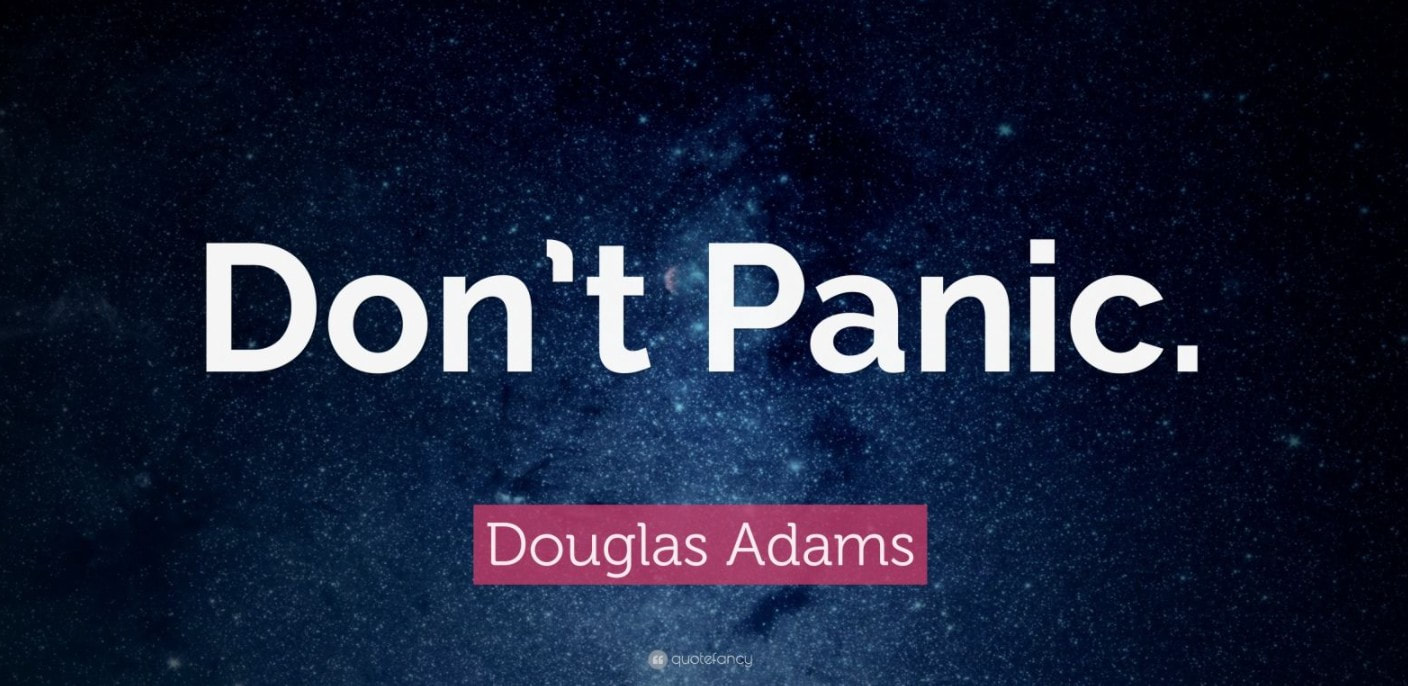

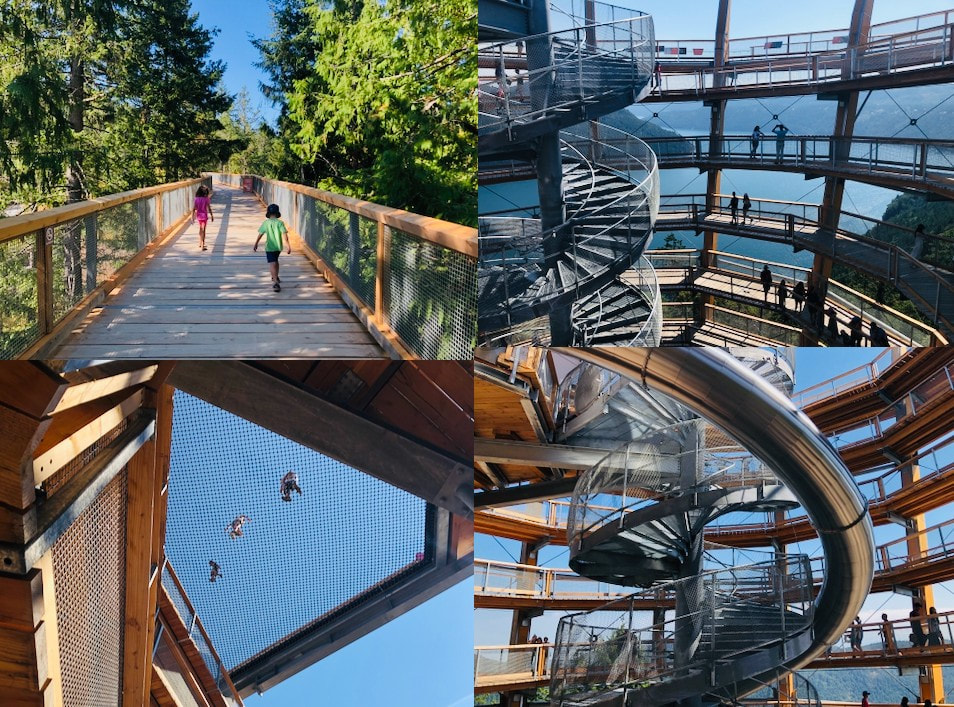
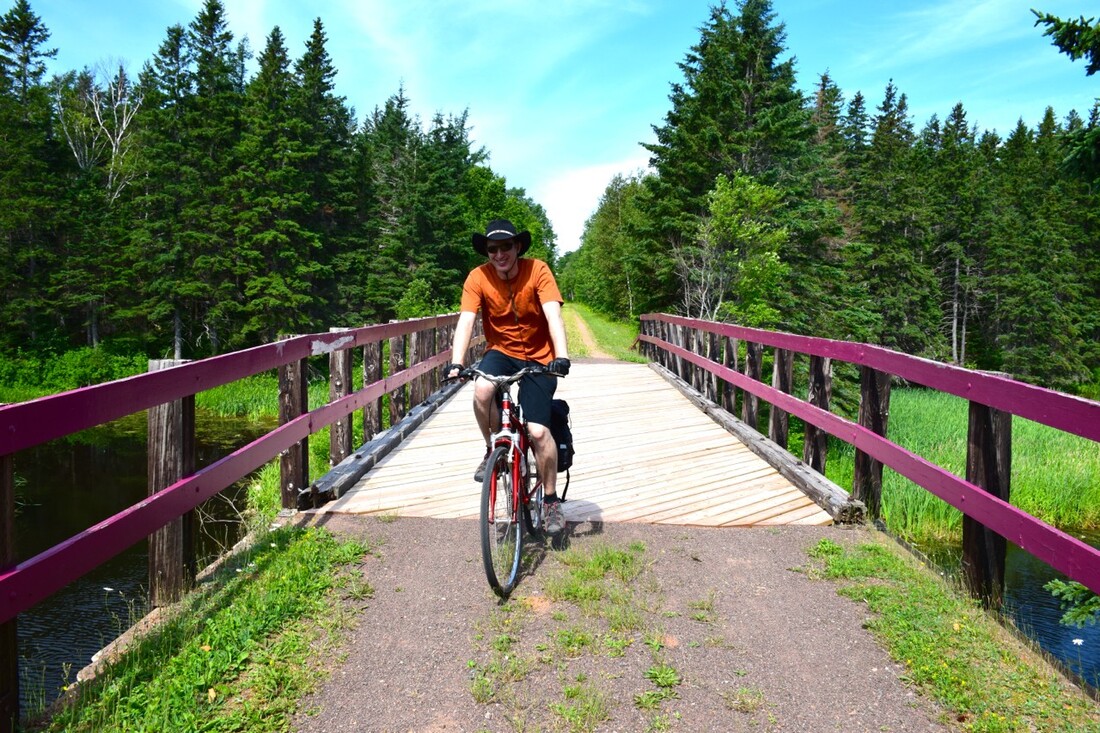
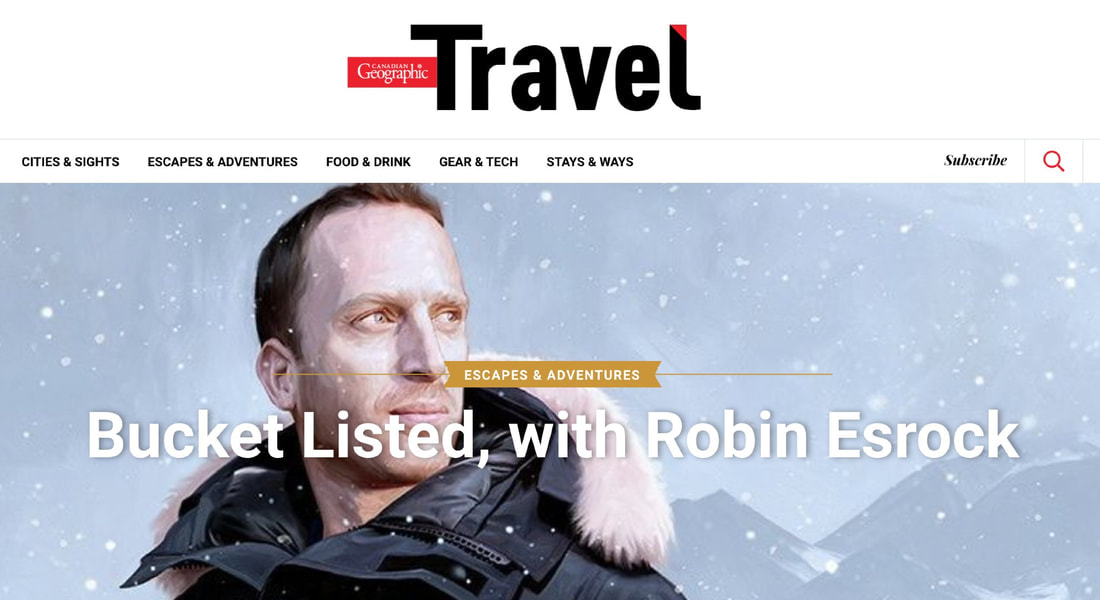


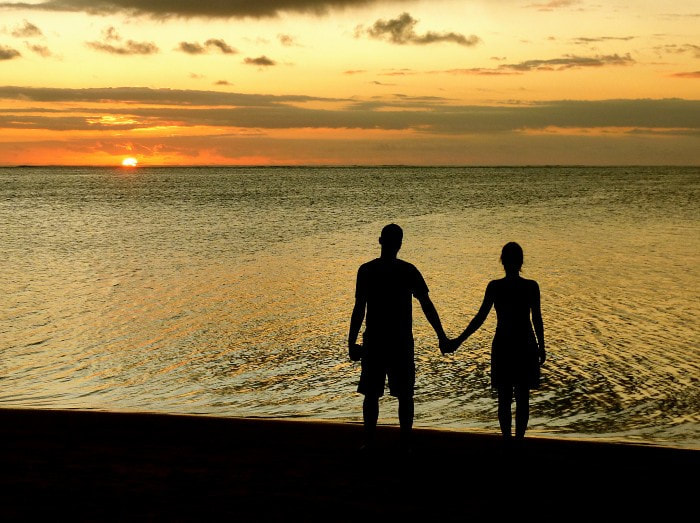
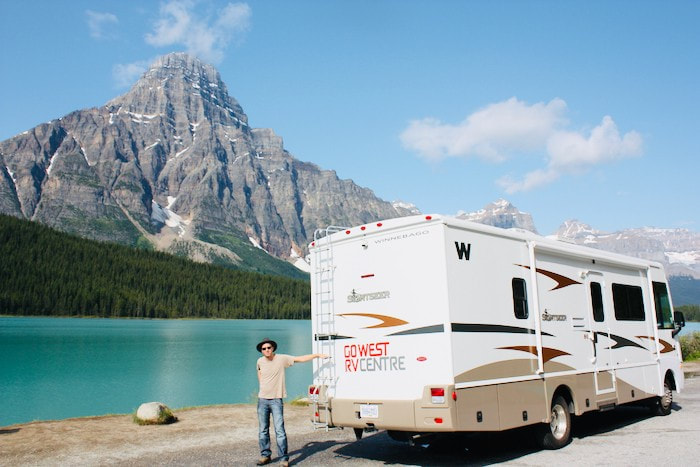


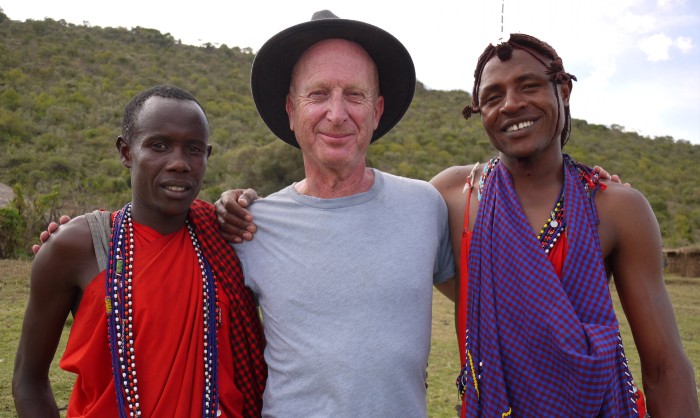
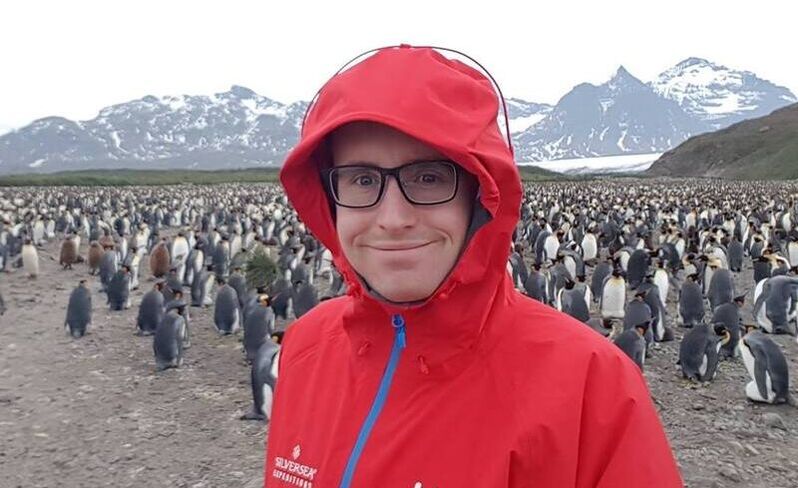
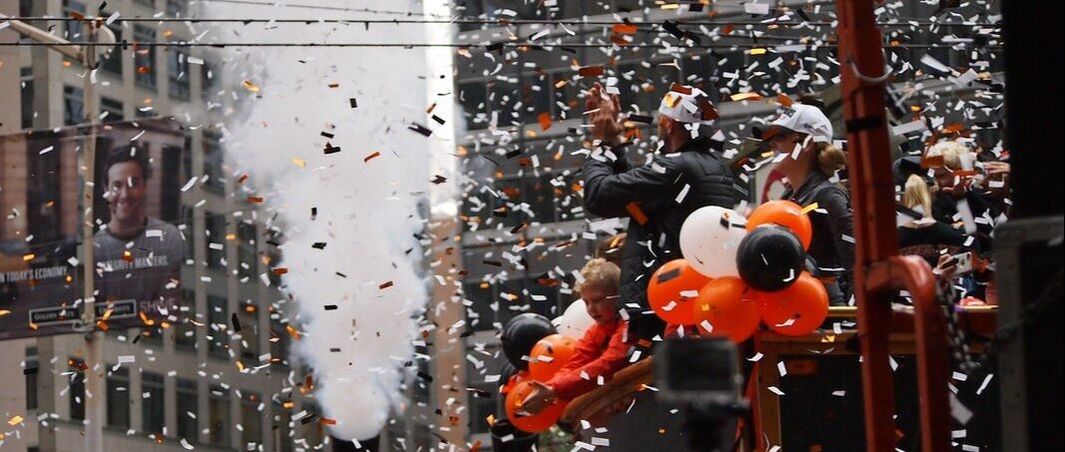
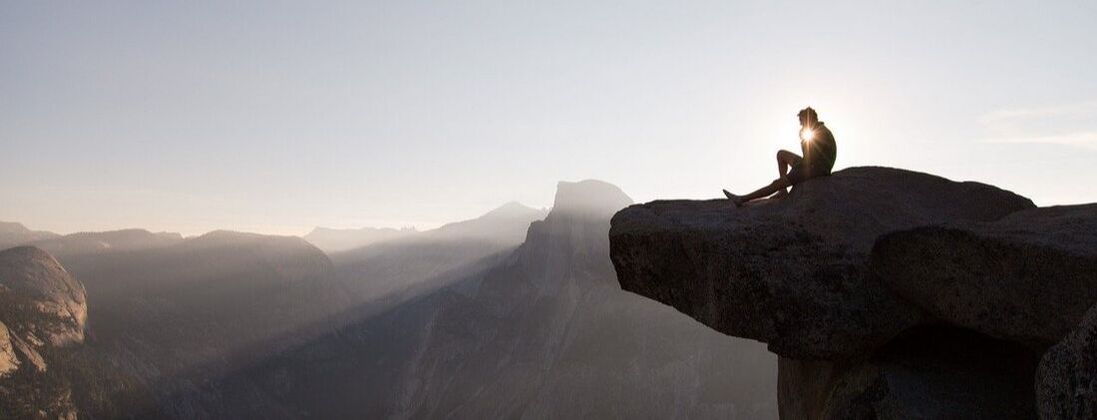
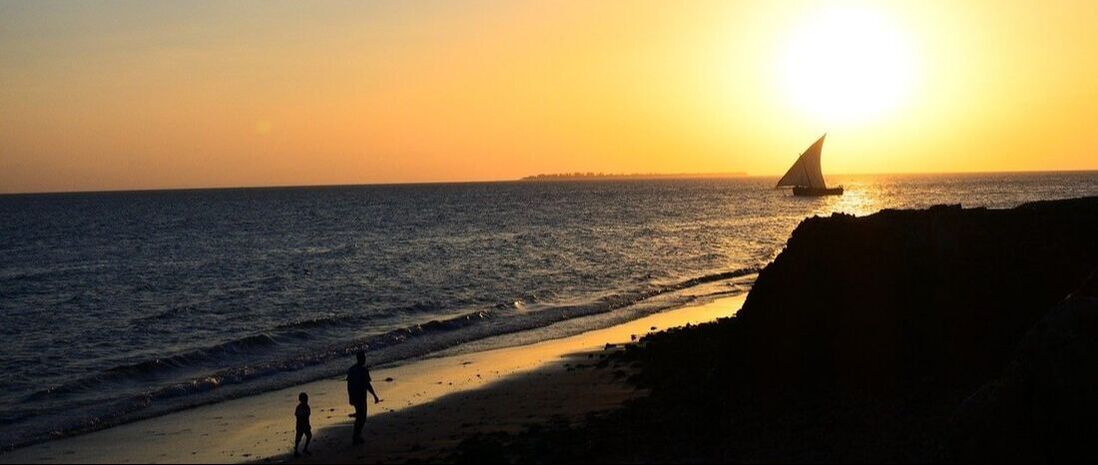

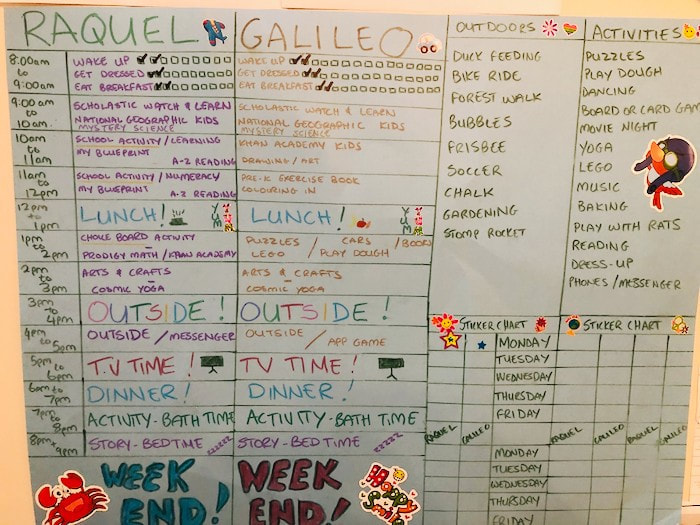
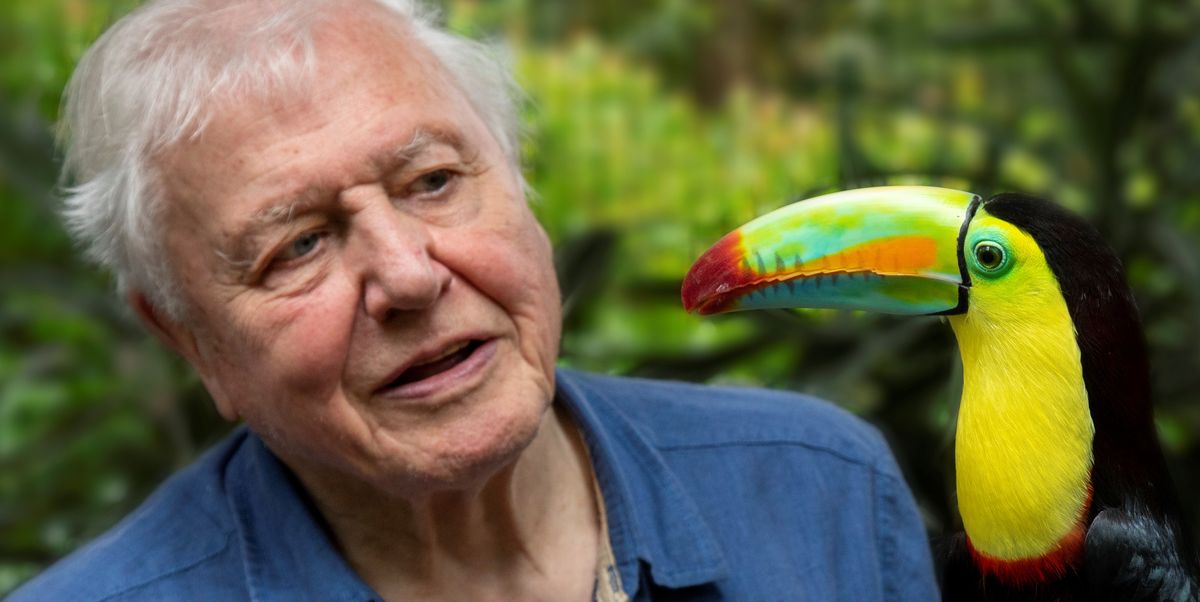
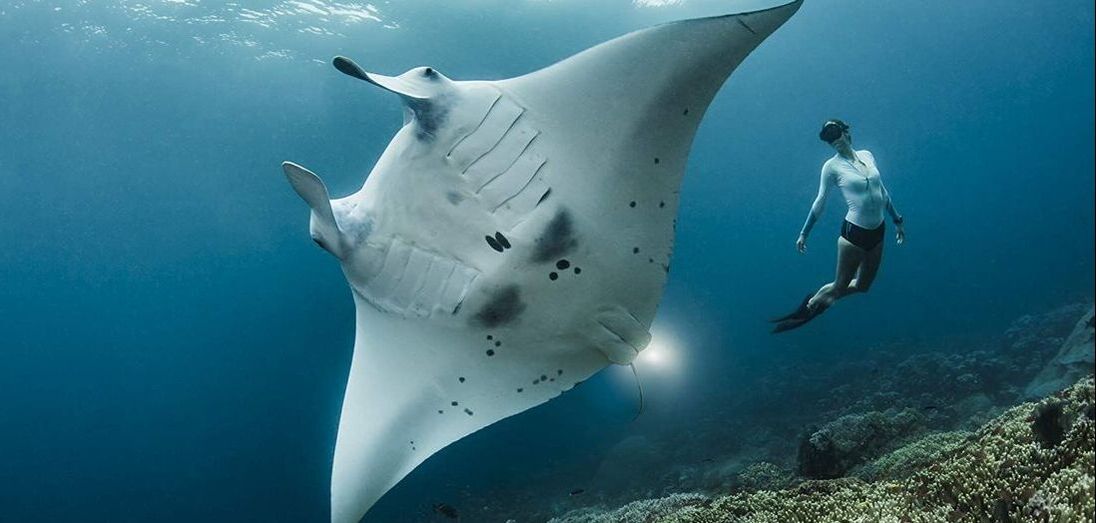
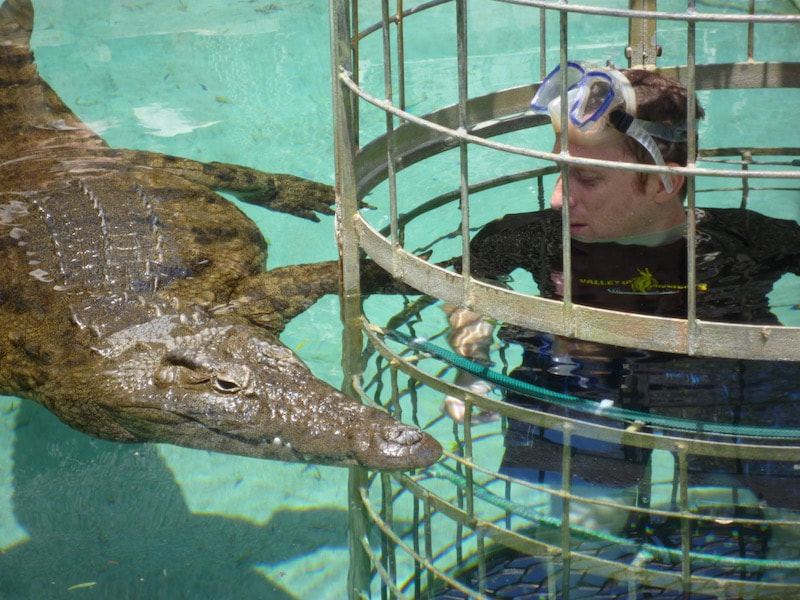
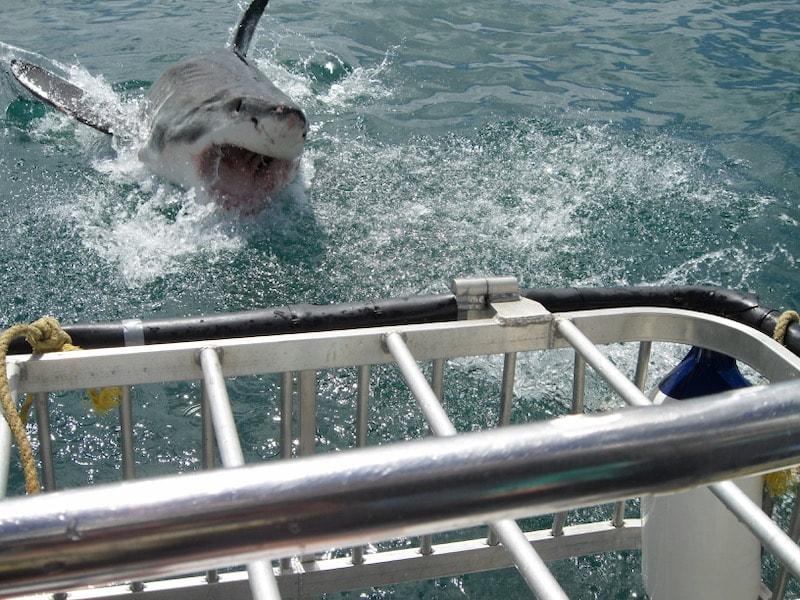
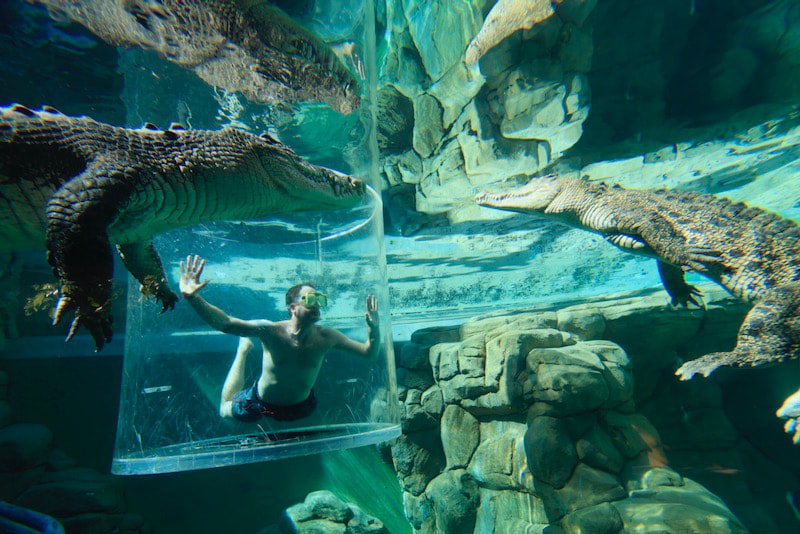
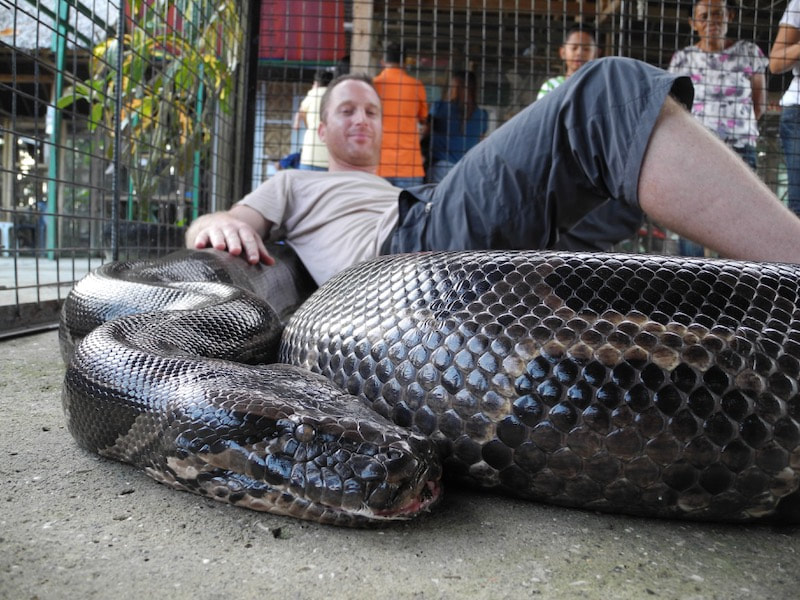
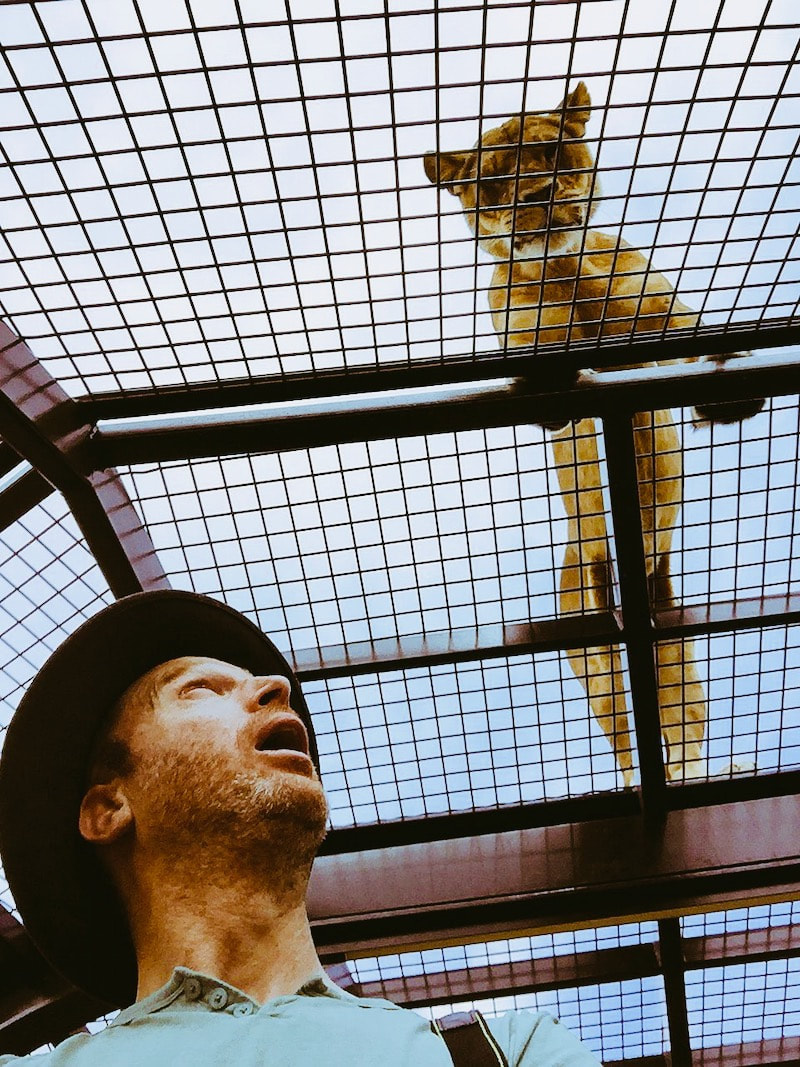
 RSS Feed
RSS Feed

